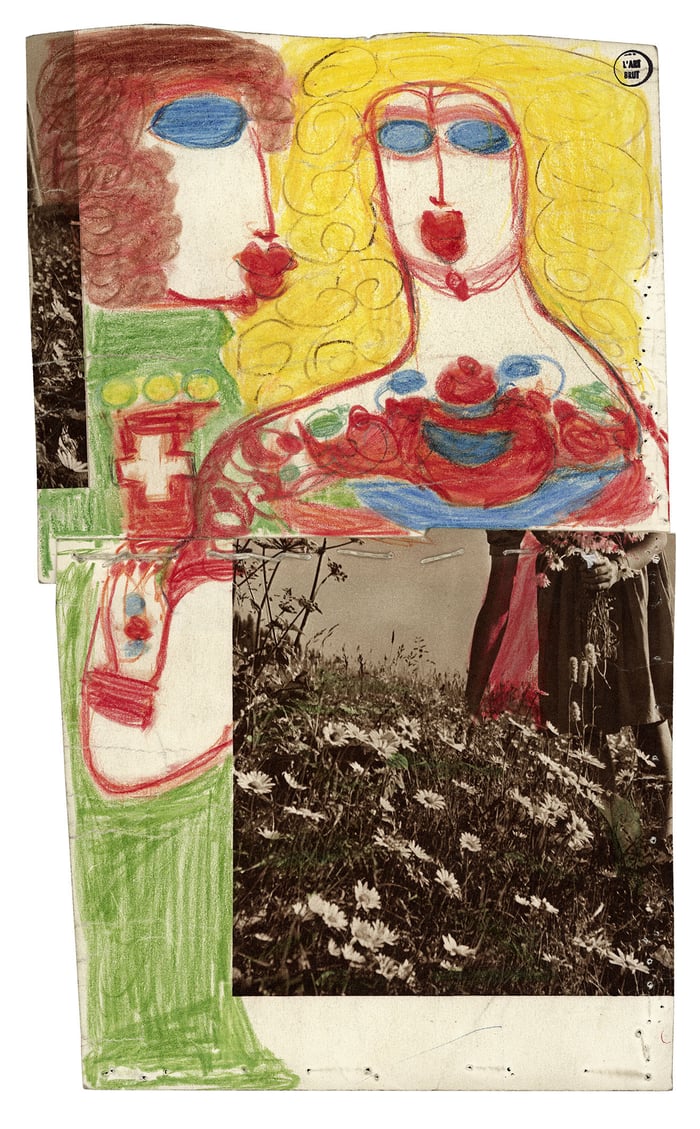The Collection de l’Art Brut marks its 50th anniversary in February 2026. But the concept of Art Brut dates back to the mid-20th century, when Jean Dubuffet (1901–1985), a successful artist in his own right, developed an avid interest in works produced outside the confines of conventional art circles.
Dubuffet – the first true theorist of Art Brut – coined the term in the summer of 1945, when he visited psychiatric hospitals, prisons and collections of ethnographic and other art in Switzerland in search of works of interest. The doctors, artists and museum directors he met during this trip would be instrumental in helping Dubuffet build his then-nascent collection and develop the concept and its core principles, which he refined through his subsequent reflections and discoveries – first in Switzerland, and later in France and elsewhere.
Switzerland thus played a key role in the emergence of a new genre that challenged prevailing categories and definitions and helped draw attention to the work of self-taught outsider artists.
The 50th anniversary exhibition Art Brut in Switzerland: From the Origins of the Collection to the Present and the accompanying publication bring together contributions from numerous artists and authors to explore Dubuffet’s close and enduring ties with Switzerland – a relationship that led him to donate his collection to the City of Lausanne in 1971 for long-term preservation and public display.
The show features a selection of drawings, paintings, sculptures, embroideries, writings and assemblages from the Collection de l’Art Brut’s holdings. Some of these more than 300 pieces come from Dubuffet’s original collection, which he began building up in 1945, while others are more recent acquisitions added in the half-century since the museum opened in 1976.
While the works on display reflect the distinctive forms of expression adopted by these self-taught creators – none of whom were destined to become artists – the landscapes and buildings they depict are unmistakably Swiss. Other clues as to the nationality of the artists behind these pieces include mountains, trains and cows – animals that Dubuffet himself portrayed, and indeed glorified, in his early paintings. In this sense, the selected exhibits are the very embodiment of Art Brut: an unconstrained form of creative expression championed by Dubuffet as a counterpoint to established art.
Curated by Sarah Lombardi, director of the Collection de l’Art Brut

